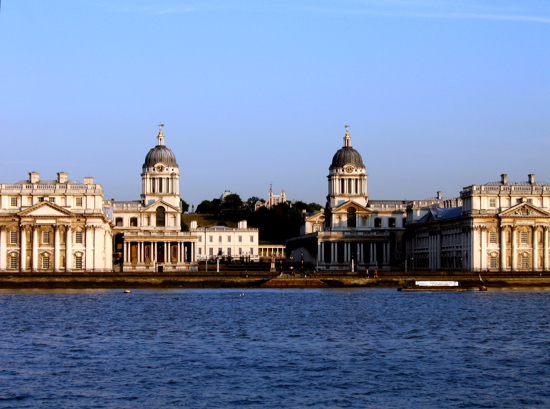Of all the many books I have read over the
years, one of the most enjoyable consisted of the day-to-day ramblings of an
ale-swilling, philandering but very capable civil servant. The diary of Samuel Pepys, who rose through
the ranks to occupy an important role in the Administration of the Navy, and
later became an MP, although only covering a decade of his life, provides not
only a fascinating insight into the life of 17th century London, but also a
running commentary on some of the most significant events in the city's
history, including the Black Death and the Great Fire of London.
Pepys was born on 23 February 1633 in Salisbury Court, a
street leading from Fleet Street towards the River Thames. The street was once the main carriage
entrance to the medieval palace of the Bishops of Salisbury. The area was destroyed during the Great Fire,
but Salisbury Court
still exists as a street, and there is a blue plaque declaring that "In a
house on this site Samuel Pepys, diarist, was born". Pepys' education included a stint at St Paul's School, still in existence and located in the
riverside suburb of Barnes in south-west London. He went on to study at Cambridge University.
Pepys started keeping his diary at the beginning
of 1660, and during this first year he was appointed to the Navy Board. During this time he lived and worked in Seething Lane,
which is just to the west of Tower Hill Underground Station, where there is a bust commemorating him. This location actually survived the Great
Fire, only to succumb to a later fire in 1673.
Again, a blue plaque marks the spot.
His leisure time included visits to the 'coffee houses' which were
gaining popularity at that time, and he was an avid theatre-goer. An entry in his diary in September 1661 talks
of a visit to his local theatre, Salisbury Court Theatre, to view a performance
of 'Tis a Pity She's a Whore' during which, true to form, he was distracted
from the proceedings on the stage by the attractive females in the audience.
 | |
| Bust of Samuel Pepys, Seething Lane, London EC3 - geograph.org.uk - 1077498. Photo by John Salmon, via Wikimedia Commons |
His job with the Navy took Pepys to a
number of locations outside London, and even
abroad in his early career, when he was sent to the Netherlands to bring Charles II
back from exile. His diary entry for 30
April 1660 describes a visit to Deal on the Kent coast, which he dismisses as
'a very pitiful town'. His negative
image seems to have derived mostly from the fact that the town came up short on
the ale front: “We went to Fuller’s (the famous place for ale), but they have
none but what was in the vat.” Nevertheless,
the day ended with much drinking and bonhomie aboard the ships in port. However,
Pepys was much more taken with 'Maydstone' (now Maidstone), a Kent town on the River Medway, which he
found "very pretty as most towns I ever saw, though not very big, and
people of good fashion in it". As the running of the naval dockyards fell
within Pepys' remit, he spent a lot of time in the environs of Medway and the Thames,
where most of the dockyard activity was centred. At Upnor on the Medway Pepys describes the “great disorder by multitude of
servants and old decrepid men, which must be remedied”. Another regular haunt was Deptford on the Thames, where the first of the Royal Dockyards was
built. His visit to Deptford overnight
from 11-12 January 1660 was enlivened by "a rising of Fanatiques" in
response to which "seamen of all the ships present repair to us, and there
we armed every one with a handspike, with which they were as fierce as could
be". Pepys made many visits to Greenwich, another Thames
location with a strong naval pedigree.
The Navy Office was moved to Greenwich
in August 1665, and Pepys stayed in lodgings nearby for a while.
 | |
| 2005-06-27 - United Kingdom - England - London - Greenwich - CC-BY 4887324365. Photo by CGP Grey, via Wikimedia Commons |
After the period covered by the diary, Pepys
went on to have an eventful life, including being imprisoned for Jacobitism in
1690. In 1701 he moved to a house in
Clapham, and he died there two years later.
However, he was buried back in London,
alongside his wife and one of his brothers, at St Olave's Church in Hart Street in the
City of London,
which he refers to in the diary as "our own church". As for the diary itself, the original
manuscript survives to this day, and is kept in the Pepys Library at his Cambridge college, Magdalene College.
 | |
| PepysLibraryCambridge. Photo by Andrew Dunn, via Wikimedia Commons |

